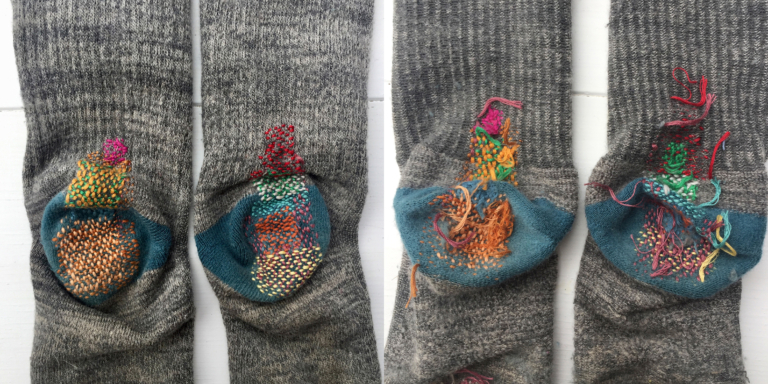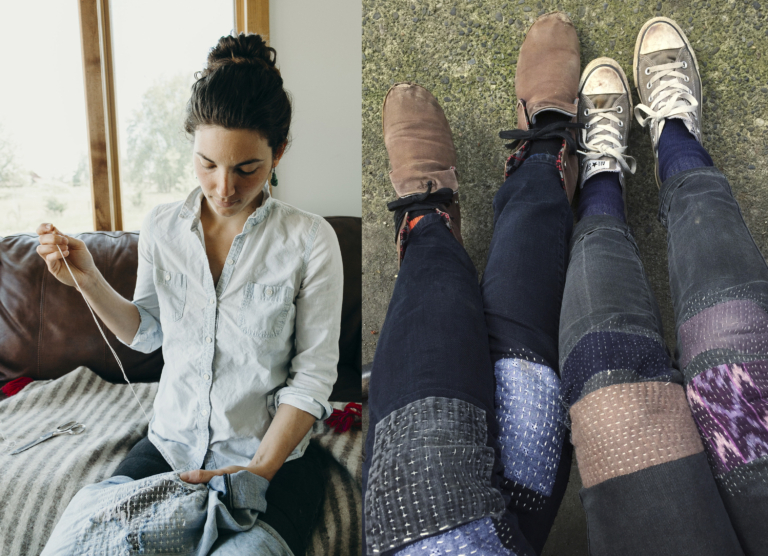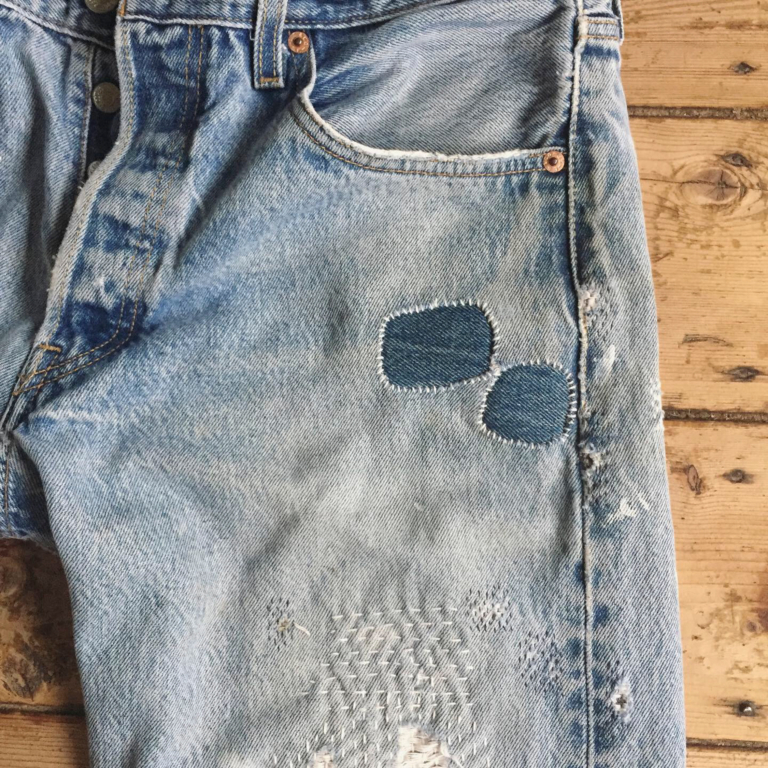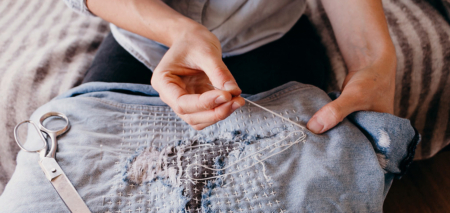Mending Life
The joy, meditation and quiet rebellion of fixing your clothes by hand.
I don’t really remember when I first became aware of the dark side of fashion. The realization was part of a cascade of awakenings sparked by news of the 2013 tragedy of the Rana Plaza garment factory collapse in Bangladesh, watching the excellent documentary The True Cost and following the “Who Made My Clothes?” campaign led by Fashion Revolution. If the majority of our clothes have come at the cost of slave labor, pollution, suffering and waste, then mending is one response—an act of healing, of acknowledging and honoring the labor and resources that went into making the garment.
Almost a decade ago, my sister Nina and I started teaching ourselves to mend our things as they ripped, wore out and fell apart. We certainly haven’t become experts, but we don’t really want to be. This is everyone’s work and a relatively simple skill—one that most folks used to know. As mothers, we’ve found ourselves continuously mending threadbare knees from crawling babies and stuffies tattered from constant love. As farmers, we’ve mended heavy-duty bibs, thick woolen socks and even straw sun hats. As artists, we’ve fallen in love with the beauty of imperfect mending and how a mend can carry a story: How did it break and who fixed it?
We saw an opportunity to lend our efforts in reviving these skills far and wide. Since 2016, we’ve focused on education and inspiration, starting with sharing simple mending tutorials on our Instagram page (@thefarwoods) for things like how to darn a sock or fix a hole in the knee of your pants or leggings—even a quick watch-strap mend demonstrated by our Mama. Offline, we started teaching mending classes and repair workshops, and in 2020, we wrote and illustrated Mending Life: A Handbook for Repairing Clothes and Hearts. Through our work, we’ve found that many people are hungry to learn how to become active participants in their wardrobes instead of just consumers. The care, intention and unique hand folks bring to their repairs help them fall more in love with mended things.
This holiday season, here’s a fresh gift idea: offer to mend a friend’s or family member’s garment. If you don’t know how, start by seeking out one of the many mending resources: watch YouTube videos, search Instagram for #visiblemending, read our book or ask a friend to teach you. Alternatively, if you already know how to mend, offer to teach a friend how! It is an invaluable gift that will serve them for a lifetime. Creating—and living in—the future we want to see is going to take millions upon millions of small acts of reconciliation, love and repair.

“Darning socks is surprisingly simple, and being one of the most satisfying mends, it’s a good place to start when learning,” Sonya says. “Plain-weave darning is essentially recreating fabric to fill a hole or reinforcing fabric where it is wearing thin, such as in the heel of a sock. Minimal tools are needed: a tapestry or darning needle, yarn or embroidery thread and a darning egg to hold the shape of the heel, if that’s where the mend is needed. Pro tip: An orange or onion can sub in for a darning egg!” Socks right side out (on the left) and inside out (on the right). Photo courtesy of The Far Woods

Left: The author, on the mend. Photo: Corrinne Theodoru.
Right: “Wearing our own mended clothes has been a conversation starter, a teaching tool and our quiet rebellion,” Sonya says. “This is us creatively practicing a new mindset that may not be mainstream yet, but by working to normalize something uncommon, we may eventually, hopefully, make it common again.” Photo courtesy of The Far Woods

“Each rip tells its own story,” Sonya says. “Here’s where I snagged my pants on a wayward nail sticking out from an old chair my great-grandfather made. Each mend can carry a story, too. Every time these jeans needed mending, I practiced a new technique I had just learned. The result is a ‘living’ garment—still useful, ever-evolving and visibly loved.” Photo courtesy of The Far Woods
FIY! (Fix it Yourself)
Visit our Care & Repair page and learn how to keep your gear better than new, and out of the landfill, too.

